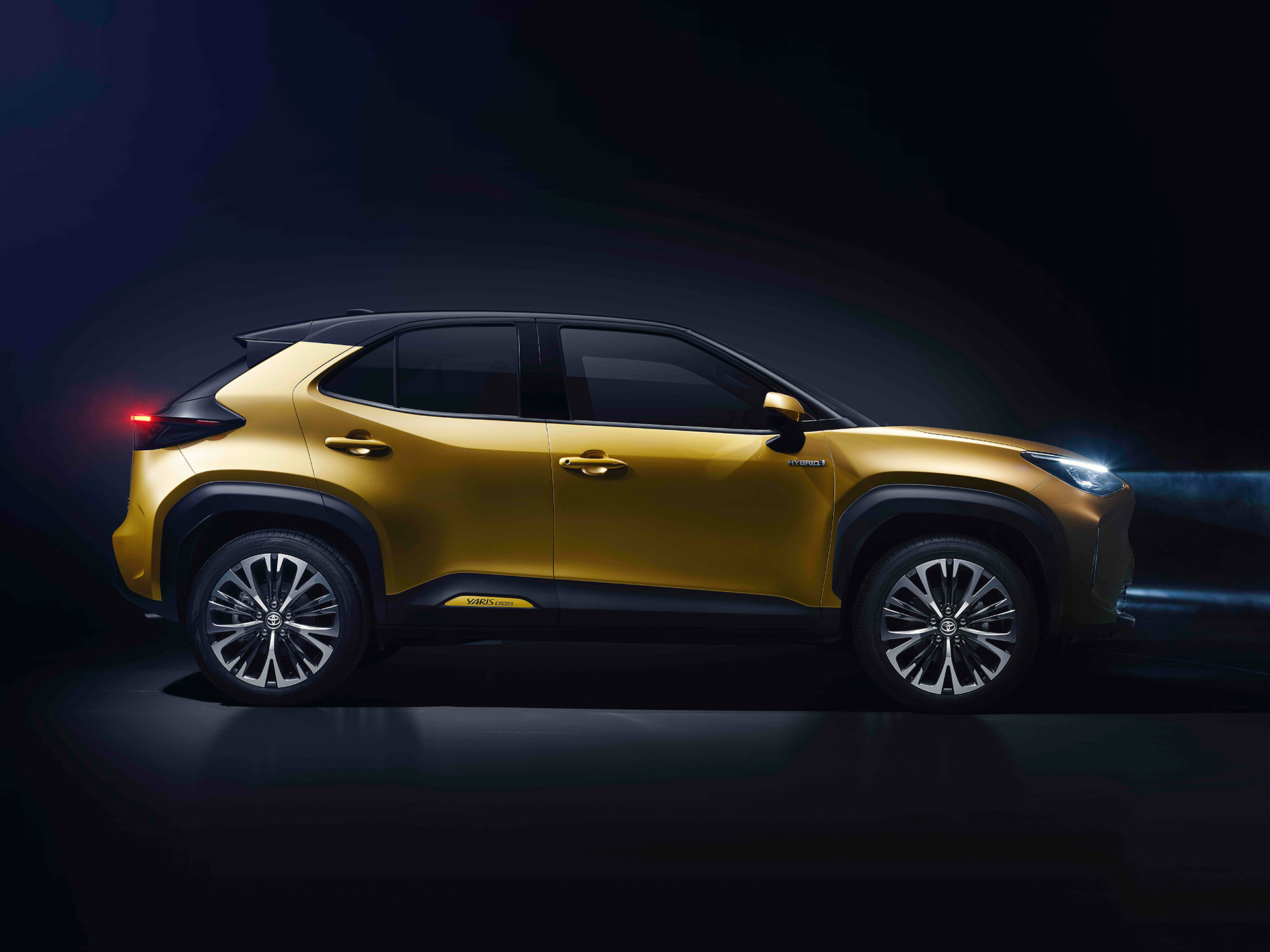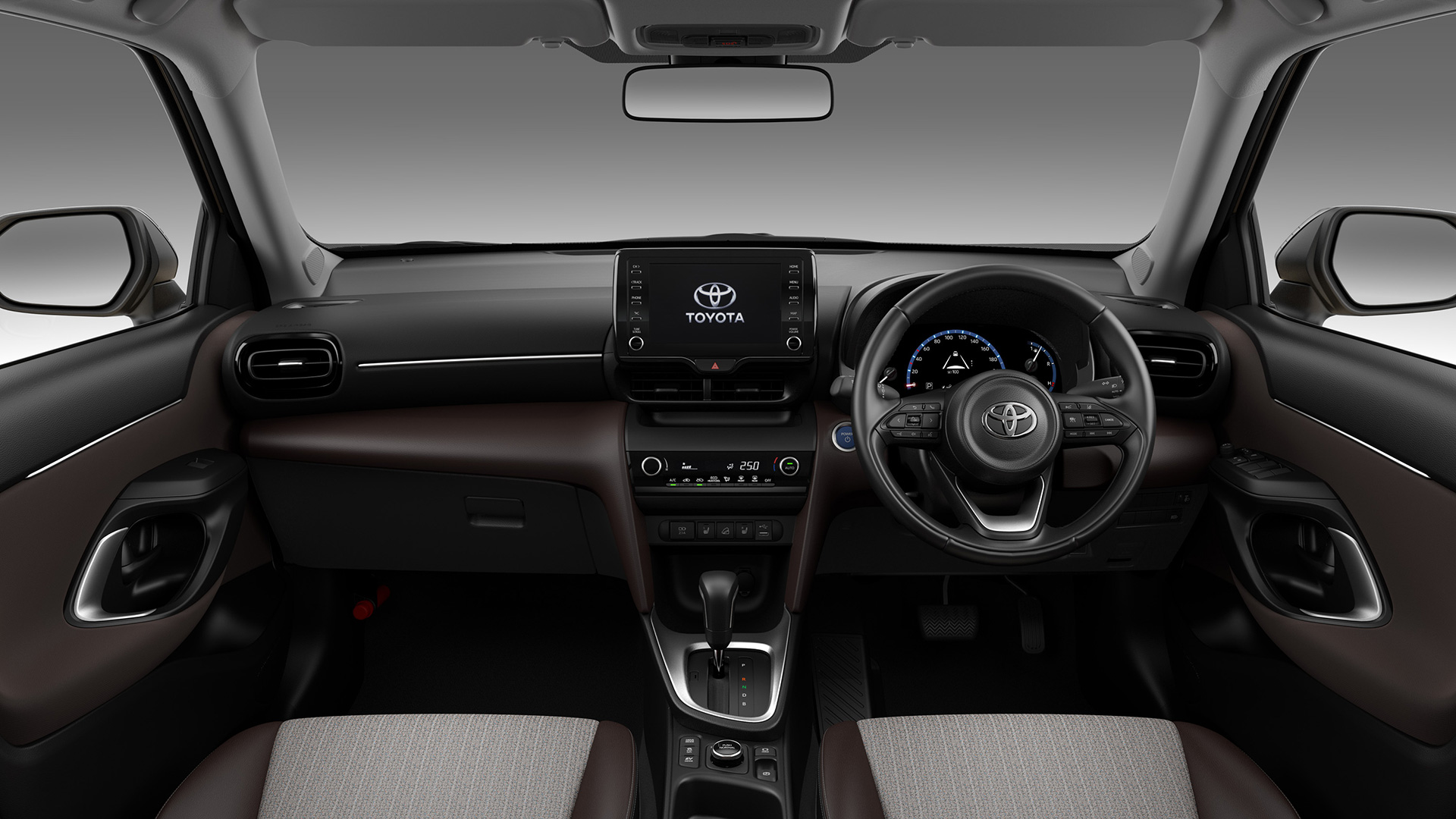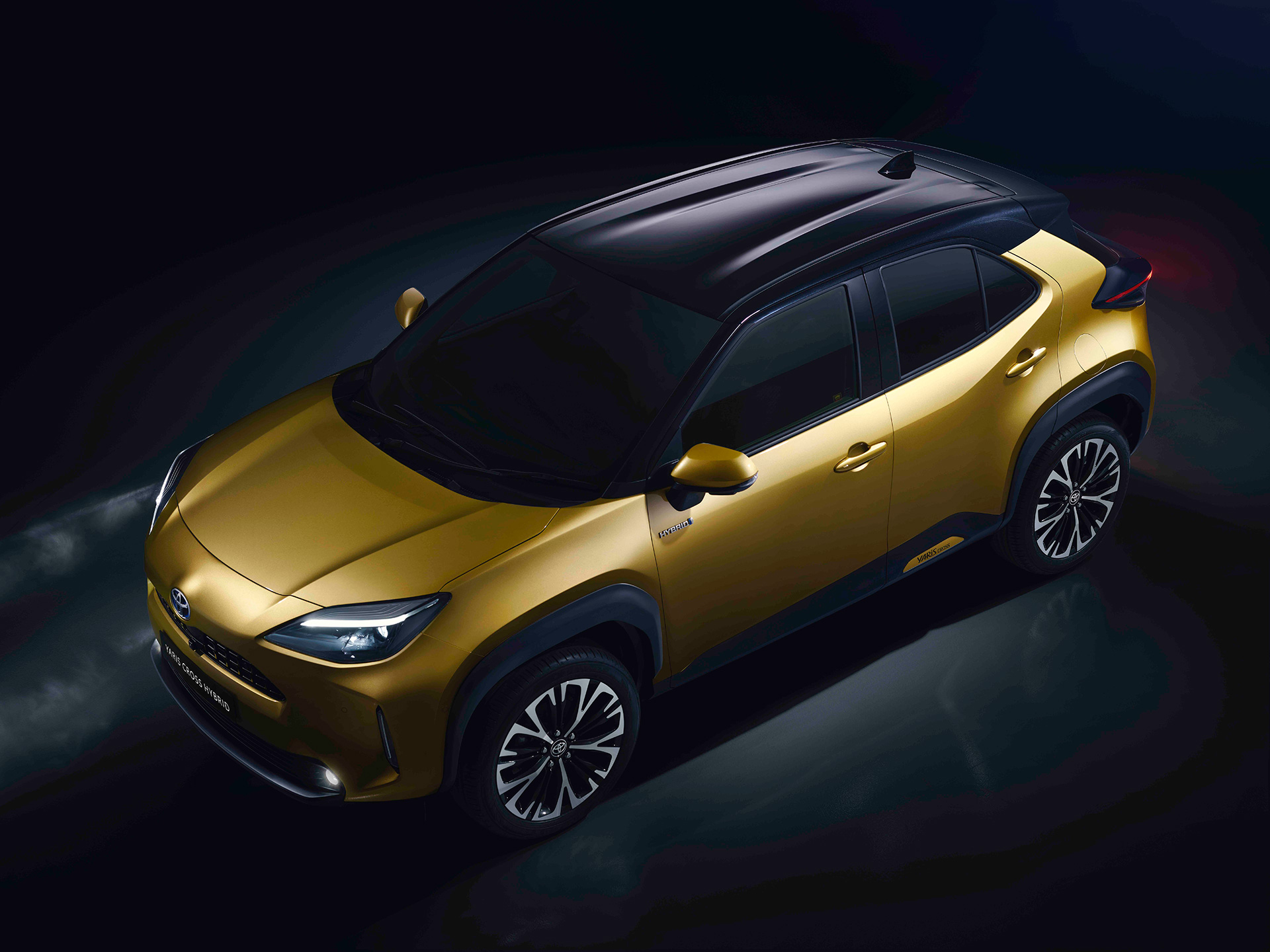Crossovers are all the rage these days, and why not? They are small around to zip around town like a B-segment hatchback yet offer a driving position that’s a head-and-shoulder above the rest. Everyone loves them to the point where manufacturers who don’t jump in the bandwagon will get left far behind. Toyota, seemingly late to the gate, has just boarded the wagon with the Yaris Cross.
Sitting just a rung down from the Toyota C-HR, the Yaris Cross is a B-segment crossover based on Toyota’s TNGA-B platform and utilises its all-new hybrid system. Toyota says the use of the new TNGA platform give the Yaris Cross “offers a higher dimension of basic and environmental performance”.
The Yaris Cross — at 4,180mm long, 1,765mm wide and 1,560mm tall — is longer, wider and taller than its hatchback sibling. The Yaris Cross also uses a 10mm longer wheelbase than the Yaris hatchback at 2,560mm. By comparison, the C-HR is 180mm longer, 30mm wider and 5mm taller than the Yaris Cross; befitting its compact SUV tag.
Toyota says the exterior design of the Yaris Cross “though simple, expresses the robustness of an SUV”. The angular grille, side vents and flared wheel arches lend to an aggressive front fascia. The squinty headlights are mounted above the grille, rather than the flanks to give the car a taller stance. It works well with the strong creases on the bonnet and pronounced body lines.
The side profile of this compact crossover is familiar, as seen with its main competitor, the Nissan Juke. The blackout out roof, A-Pillar and C-pillar lend to a sleek profile, with the rear kink creating a sporty look, visually lowering the car further. The black cladding at the sides emulates rugged SUV styling. Massive 18-inch wheels complete the crossover’s urban-compact design.
The design of the Yaris Cross’ rear with slim LED taillights and a 3-dimensional Toyota logo protruding from the centre reminds of the Harrier, albeit miniaturised.
The interior of the Yaris cross is identical to the fourth-generation Yaris hatch, not the ones we have here. The high-mounted central infotainment screen dominates the dash design, with the rest of the interior following a well-thought layout. Everything is where it is meant to be and within easy reach. The two-tone interior colour scheme and touches of silver trim add a little flair to basic, albeit boring design.
Safety-wise, the Yaris Cross is expected to follow the hatchback in incorporating the latest Toyota Safety Sense system. Collision mitigation warning and braking, cross-traffic alert and active lane-keeping assist are some of the features expected to be included.
The powertrain on the Yaris Cross also seems to be carried over from the hatchback, which includes a petrol and hybrid variant. A 1.5-litre three-cylinder Dynamic Force Engine powers petrol variants and mated to either a six-speed manual or a Direct Shift CVT gearbox. This model is available in front-wheel drive only.
The Hybrid, on the other hand, keeps the 1.5-litre engine but adds an electric motor to the front axle for front-wheel drive. Four-wheel drive variants get another electric motor on the rear axle, which seems to be the more interesting car.
Unfortunately, Toyota has yet to release official power figures on the powertrain, so we have to wait and see until its official launch in Autumn this year in Japan. Europe can expect to see the Yaris Cross sometime mid-2021.










